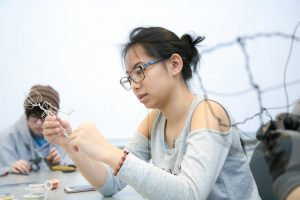Virtual Classrooms: Enhancing Accessibility and Flexibility in Education
In today’s fast-paced digital world, accessibility and flexibility have become essential when it comes to education. As traditional classrooms continue to face challenges due to various limitations, virtual classrooms have emerged as a powerful alternative, bridging the gap between education and technology. With the advancement of technology, virtual classrooms have transformed the way we learn and have become a game-changer in education. In this article, we will explore how virtual classrooms are enhancing accessibility and flexibility in education, making learning a seamless experience for students and teachers alike.
The Rise of Virtual Classrooms
The concept of virtual classrooms is not entirely new, but it gained significant popularity in recent years. Virtual classrooms blend traditional teaching methods with technology, allowing students to learn from anywhere in the world. With the rise of online learning platforms and tools, virtual classrooms have become a viable option for both students and educational institutions.
Enhancing Accessibility
One of the most significant advantages of virtual classrooms is the accessibility it offers. With traditional classrooms, students are limited to learning within the four walls of the classroom, and sometimes geographical location can also be a barrier. However, with virtual classrooms, distance and location are no longer limitations. Students can access their classes from anywhere in the world, as long as they have a stable internet connection. This allows students in remote areas or even students with disabilities to access quality education without any hindrance.
Flexibility in Learning
Virtual classrooms have also revolutionized the traditional structure of education, making it more flexible for both students and teachers. With virtual classrooms, students have the flexibility to learn at their own pace, enabling them to better absorb the material. It also eliminates the need for strict schedules, making it easier for students to balance their studies with other commitments such as work or family. Additionally, virtual classrooms offer the convenience of recorded sessions, allowing students to access the material at any time, making learning more efficient.
The Benefits for Teachers
Virtual classrooms not only benefit students but also provide numerous advantages for teachers. With traditional classrooms, teachers face challenges such as managing large classes, limited resources, and restrictions on teaching styles. In contrast, virtual classrooms offer a platform to overcome these challenges.
Effective Teaching Tools
Virtual classrooms offer a wide range of effective teaching tools that traditional classrooms cannot provide. These tools include interactive whiteboards, document sharing, multimedia presentations, and real-time feedback. These features allow teachers to make their sessions more engaging, increasing student participation and improving overall learning outcomes.
More Efficient Management of Classes
With virtual classrooms, teachers can easily manage their classes, including creating and distributing assignments, conducting assessments, and keeping track of student progress. This saves time and allows teachers to focus on other aspects of teaching, such as lesson planning and creating innovative teaching methods to further enhance the learning experience.
The Future of Education
It is safe to say that virtual classrooms have had a significant impact on the education sector and are changing the way we learn for the better. With the ongoing pandemic forcing schools and universities to shut down, virtual classrooms have become a necessity, showcasing their importance and potential in the education industry. As technology continues to advance, we can only expect virtual classrooms to play an even more significant role in shaping the future of education.
Inclusion and Equality
Virtual classrooms not only enhance accessibility and flexibility, but they also promote inclusivity and equality in education. Students from different backgrounds and abilities can access the same quality education, giving them equal opportunities to achieve their academic goals.
Continuous Improvements
As virtual classrooms continue to grow in popularity, we can expect to see ongoing improvements and innovations. This includes the development of new tools, features, and platforms that will make the virtual learning experience even more effective and efficient.
In conclusion, virtual classrooms have transformed the education industry, providing a solution to the accessibility and flexibility challenges faced by traditional classrooms. With its numerous benefits for both students and teachers, virtual classrooms are here to stay and will continue to revolutionize the way we learn. As a result, we can look forward to a more inclusive, efficient, and accessible education system in the future.





